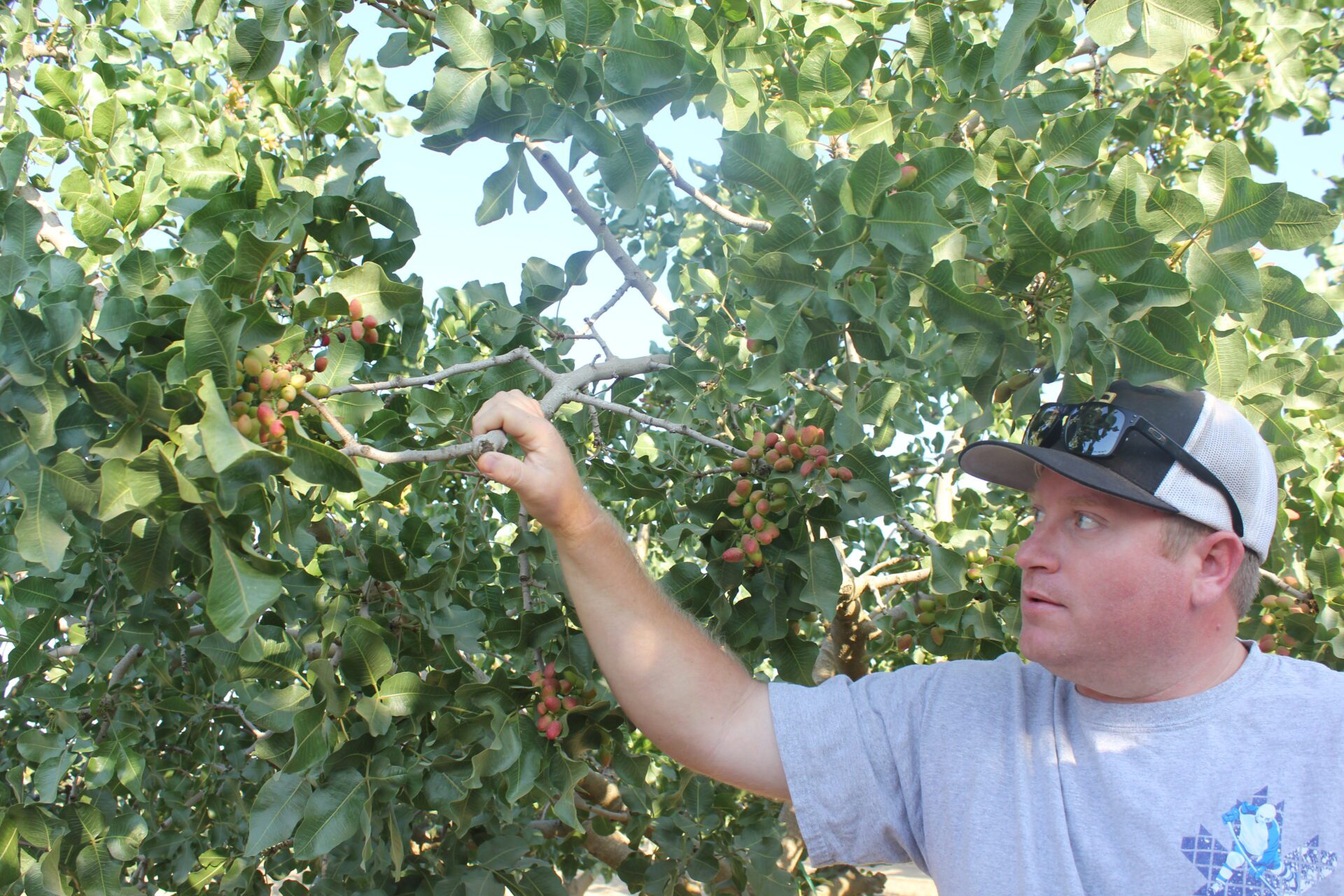Sampling pistachio kernels in July can help growers determine their harvest timing as well as show percentage of fruit set.
Crop advisor Nate Laux with Integral Ag of Chico said while the samples can help with estimating crop yields and split nut percentages, early sampling can also be misleading. Kernel fill can take place at a faster pace later in the season provided trees are not water stressed or deficient in nutrients, he said.
“We sample orchards to see where the crop is at, developmentally, there have been times where we’ve predicted 30 percent blanks based on early sampling only to have the crop come in at ten percent at harvest,” he said. The nuts can fill rapidly over a two to three week period if the tree has adequate water and nutrition.
Still, sampling a pistachio crop can give a grower some idea of the fruit set and crop development in an orchard. University of California Cooperative Extension pomology specialist Louise Ferguson said blanks could develop in July during kernel enlargement. This occurs when fertilized embryos fail to enlarge to fill the shell.
Shell splitting is dependent upon kernel growth and development within the shell. Kernel growth begins after the shell has reached its full size. The first split shells are seen about the time the kernel has grown to fill the shell and would be exerting physical pressure on it. At this time, the shell is fully hardened.
The standard method for sampling is to randomly collect ten clusters of pistachio nuts from an area of the orchard, making sure north, south, west and east sides of trees are represented in the sample. Nuts are cut lengthwise to see the developing green embryo. Each nut is rated from 0-5, 0 being no fill and 5 completely filled. After cutting and rating, count the nuts in each ratings pile and determine percentage for each stage.
UCCE farm advisor emeritus Bob Beede notes that kernel filling requires not only water, but also nitrogen, potassium and boron. Average water use in July is 9.8 inches or 55 gallons per tree per day with 150 trees per acre. August water use is 8.2 inches.
The amount of water applied must be greater than the tree requirements due to irrigation inefficiency. Deficit irrigation, zinc or boron deficiency or cool weather during kernel fill will reduce split nut percentages.

Cecilia Parsons
Cecilia Parsons has lived in the Central Valley community of Ducor since 1976, covering agriculture for numerous agricultural publications over the years. She has found and nurtured many wonderful and helpful contacts in the ag community, including the UCCE advisors, allowing for news coverage that focuses on the basics of food production.
She is always on the search for new ag topics that can help growers and processors in the San Joaquin Valley improve their bottom line.
In her free time, Cecilia rides her horse, Holly in ranch versatility shows and raises registered Shetland sheep which she exhibits at county and state fairs during the summer.
















